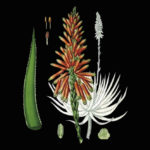
€56.00
Stomach digestion intestines Soluble fibers extracted from chicory with prebiotic action.
Aloe vera-boswellia gel syrup
PRODUCT FEATURES
Ahires is like a bold architecture supporting 100% active phase, as in the best tradition of HOPISPHARMA in a bold and uncompromising formulation. Created to restore the balance of the gastrointestinal tract at various levels and aiding natural supportive therapies, it hinges on the presence of ALOE, LAPACHO, FRUTTOLIGOSACCARIDES and ANGELICA. It is developed with the support of BOSWELLIA that exerts anti-inflammatory action, useful in blocking the cascade of pro-inflammatory mediators that can prolong the state of discomfort in maintaining a high mucosal reactivity to external agents.
GUAR fiber, a mucilage of natural origin with soothing action and anti-inflammatory On the gastrointestinal mucosa. GSE (grapefruit seed extract), in addition to allowing natural preservation of the product without the need to add chemical preservatives, has a general antimicrobial action, which is also useful in counteracting helicobacter pilory, an activity to which, on the other hand, lactic acid bacteria (typical colonizers of intestinal flora) are quite resistant: the result is a strengthening of them against antagonistic pathogenic species. Papaya extract rich in the enzyme papain, promotes digestion particularly of protein foods, acts as a soothing agent by going on to neutralize the very mediators of inflammation; promotes gastric emptying by reducing bloating by increasing the elimination of excess gas and fermentative processes thus promoting optimal and natural digestion of foods.
Methylsulfonylmethane MSM which directly enters the sulfur cycle which implies various processes including: chlorine and sodium distribution, Collagen V, the proteoglycan system. FOS positively regulates calcium and magnesium concentrations in the colon, thereby helping to control cell growth in this district. All this is made even more exclusive to our customers by the fact that Ahires is prepared every 10 days or according to demand and each batch in no more than 20 copies at a time and thus hand-numbered.
INGREDIENTS:
HOW TO USE THE PRODUCT
10 ml per dose, pure or diluted in equal amounts of water, 2 times a day or as needed, best on an empty stomach. To promote good bowel function, it is best to take 20 ml at night before bedtime. As maintenance 20ml three times a week.
DAILY DOSES
Fructooligosaccharides FOS 3000mg
Papaya extract 2000mg
Methylsulfonylmethane MSM 1000mg
Aloe vera freeze-dried extract 200:1 300mg
Angelica Arcangelica 300mg
Grapefruit seed extract 300mg
Boswellia E.F. 300mg
Lapacho (tabebuia) extract 240mg
FORMAT
500 ml.
Glass bottle seal cap and shot glass
* raw material origin CHINA
BIBLIOGRAPHY
Choi WH, Um MY, Ahn J, et al. Ethanolic extract of Taheebo attenuates increase in body weight and fatty liver in mice fed a highfat diet. Molecules. 2014 Oct 8; 19(10): 16013-23
Suo, Maorong & Ohta, Tomihisa & Takano, Fumihide & Jin, Shouwen. (2013). Bioactive Phenylpropanoid Glycosides from Tabebuia avellanedae. Molecules (Basel, Switzerland). 18. 7336-7345. 10.3390/molecules18077336.
Taylor L., Lapacho. In: The healing power of rainforest herbs, ed. Square One Publishers Ny. (2005)
Natacha V., et al., 2-phenil-lapachone can affect mitochondrial function by radox cycling madiated oxidation, Arch. Biochem. Biophiys, 432, 129-135 (2004)
Awale S. et al, Nitric Oxide (NO) production inhibitory constituents of Tabebuia avellanadae from Brazil, Chem. Pharm. Bull, Tokyo, 53, 710-713 (jun 2005).
Byeon SE, Chung JY, Lee YG,et al. In vitro and in vivo antiinflammatory effects of taheebo, a water extract from the inner bark of Tabebuia avellanedae. J Ethnopharmacol. 2008 Sep 2; 119 (1): 145- 52.
Ansorge, H. L., Meng, X., Zhang, G., Veit, G., Sun, M., Klement, J. F., Beason, D. P., Soslowsky, L. J., Koch, M. and Birk, D. E. (2009). Type XIV collagen regulates fibrillogenesis: premature collagen fibril growth and tissue dysfunction in null mice. J. Biol. Chem. 284, 8427-8438
Herschler, R.J. Use of Methylsulfonylmethane to Relieve Pain and Nocturnal Cramps and to Reduce Stress-Induced Deaths in Animals. U.S. Patent 4,973,605, July 26, 1989.
Lopez, H.L. Nutritional interventions to prevent and treat osteoarthritis. Part II: Focus on micronutrients and supportive nutraceuticals. PM R 2012, 4, S155-S168.
Cummings JH, Macfarlane GT. Gastrointestinal effects of prebiotics. Br J Nutr. 2002;87(suppl2):S145-51
Saggioro A. Probiotics in the treatment of irritable bowel syndrome. J Clin Gastroenterol. 2004;38 Suppl 6:S104-6.
Gibson GR, Roberfroid MB. Dietary modulation of the human colonic microflora-introducing the concept of prebiotics. J Nutr. 1995;125:1401-12.
Bouin M, Plourde V, Boivin M, et al. Rectal distention testing in patients with irritable bowel syndrome: sensitivity, specificity, and predictive values of pain sensory thresholds. Gastroenterology 2002; 122: 1771-7
Barbara G, Stanghellini V, De Giorgio R, et al. Activated mast cells in proximity to colonic nerves correlate with abdominal pain in irritable bowel syndrome. Gastroenterology 2004; 126: 693-702
Ohta A, Othsuki M, Hosoro A et al. Dietary fructo-oligosaccharides prevent osteopenia after gastrectomy. J Nutr. 1998;128:106-110
Via della Previdenza Sociale, 3
42124 Reggio Emilia
P. IVA: 02499330351
Registro imprese CCIAA di Reggio Emilia - RE- 28701
Sign up for our newsletter to receive updates on products and promotions.